When we first planned this trip, we had no idea where we were going to stay between San Antonio and Las Cruces, NM, which was our next destination. But we knew that we wouldn’t do the entire 600 miles in one go, and that we wanted to see “something” in West Texas, which is as new to me as it is to Mark. Our friend Randy suggested Marfa as a “funky modern art” stop, and so we had booked a room here, and then had other friends reinforce his recommendation. So we took off this morning (after an unexpectedly excellent hotel breakfast, even served ON PAPER PLATES and with compostable cutlery), and drove for six hours, only stopping for gas and a picnic that consisted of bread and butter, a little cheese, and the fruit we still had.
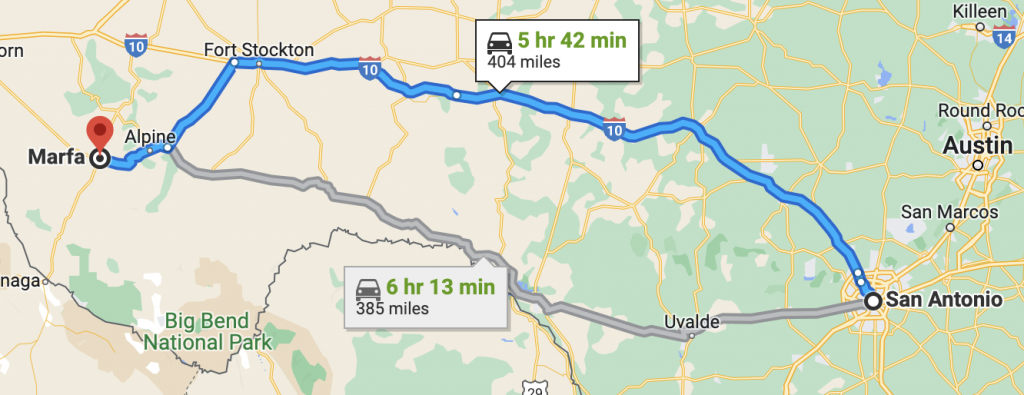
We got to Marfa about 2:30 and looked around a little bit, but it took a while for us to “get it.” Marfa is really an odd place: at first sight it is just a run-down little Texas town of 1,600 people in the middle of nowhere, with one of those outsized town squares around a big county courthouse that is completely disproportionate with the population. It was built up in expectation of an oil boom that never quite made it here, which means that it has some historic buildings from the 1920s and 1930s that are quite beautiful–a hotel, a couple of movie theaters, a bank building with tiled decorations. But then it was pretty much forgotten, until the sculptor Donald Judd (1928-1994) decided to buy a whole bunch of buildings here in the 1970s and make them display and work spaces for contemporary artists that needed lots of space. That attracted quite a few people here for visits, although I believe the number of residents is still small and makes the whole place rather sleepy-looking and definitely not like a tourist destination. But then you walk into a building and suddenly see an entire permanent collection of the works of John Chamberlain (1927-2011), who specialized in making things out of squished and contorted pieces of old cars, in a series of huge halls. And you notice that some of the little restaurants are snazzy places with very urban people having wine, rather than ice houses with crotchety old cowboys complaining about the drought.
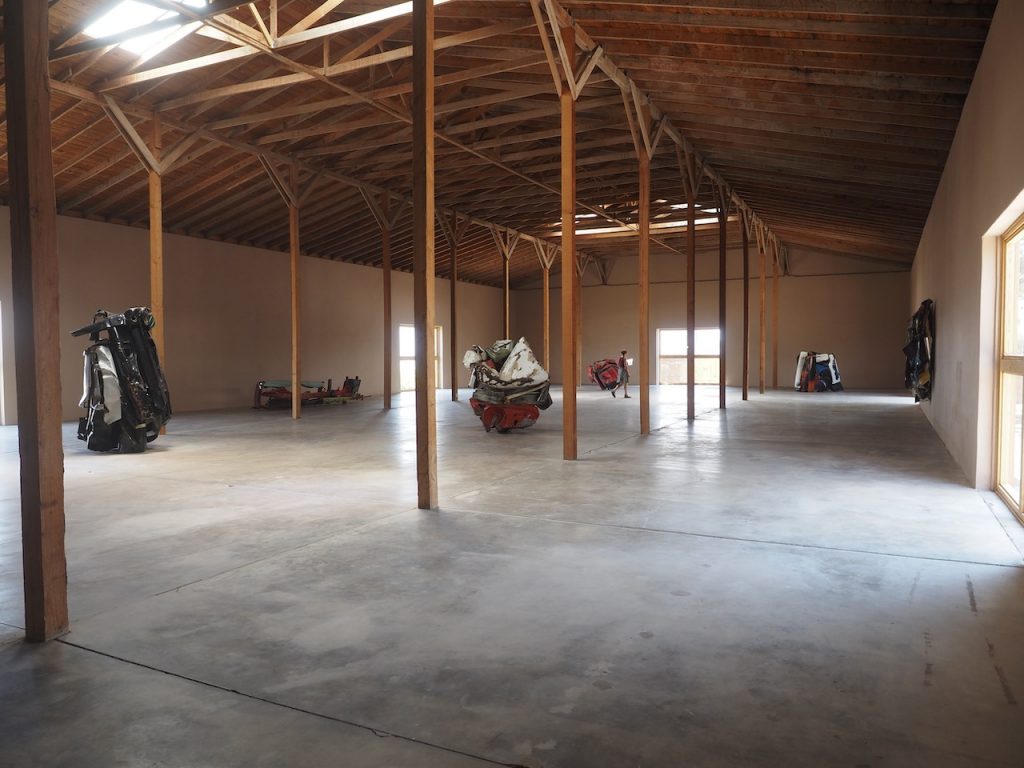
Although we didn’t go to all the art spaces here, many run by a foundation set up by Judd (there is a whole block-size building where Donald Judd worked and displayed his art), we did visit the Marfa Ballroom (a revamped dance hall from the 20s), where two contemporary artists, Carolina Caycedo and David de Rozas, have put together an exhibition on commissioned and created works about land use and abuse in West Texas. We watched part of a documentary that focused on the perspective of a Native tribe, called The Teaching of the Hands, and also admired a series of beautiful watercolors of petroglyphs copied by Forrest and Lula Kirkland, two white artists in the 1930s, that are now treasured historical documents, since many of these petroglyphs have not survived or are no longer in spaces open to the public. The exhibition was intriguing to me because all the way down here, watching the arid desert landscape and the bluffs and suddenly appearing peaks, I was wondering by whom this land is owned, how it came to be owned by anyone, and what some of the many disputes have done to it, from the Spanish (first in this region in 1535!) to the Mexicans and Americans fighting it out over who owned Texas, etc. etc. The surveyors’ tools and flags that played a major role in the art installation were a good way of thinking about the exploitation of land that looks like “nothing” can be done with it when you see it whizzing by at 80 miles an hour through a car window.
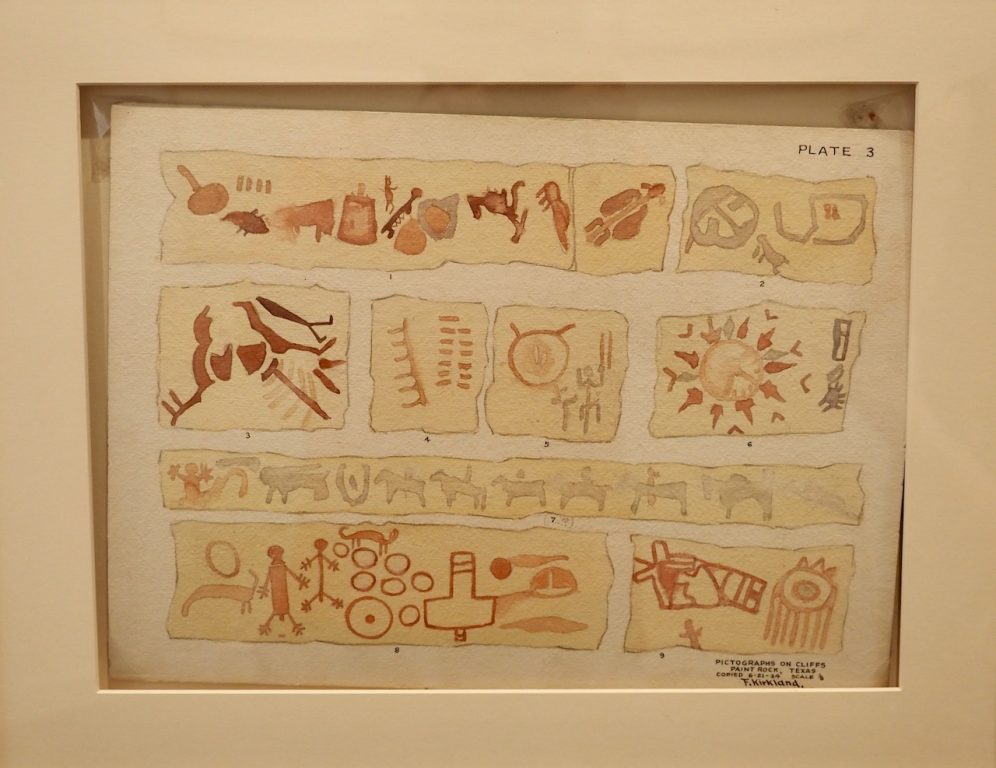
We then checked into our old-fashioned drive-to-the-door-of-your-room motel and after settling found a Thai food truck for an excellent street-food dinner (“dine-in” meant eating under umbrellas in the parking lot), and wanted around for a bit more. That gave us the impression that the pandemic hit this place rather hard, and some of the little boutiques and fancy art galleries were closed or had really minimal hours. But we liked the eery atmosphere that built as a storm seemed to approach but never quite got here–Mark was fascinated by the fact that the rain never seemed to make it to the ground, but dissipated in mid-air, while also creating an updrafts that pulled up dust devils everywhere. I had to squint as dirt was blowing in my face, and for a while we thought a real dust storm was headed our way.
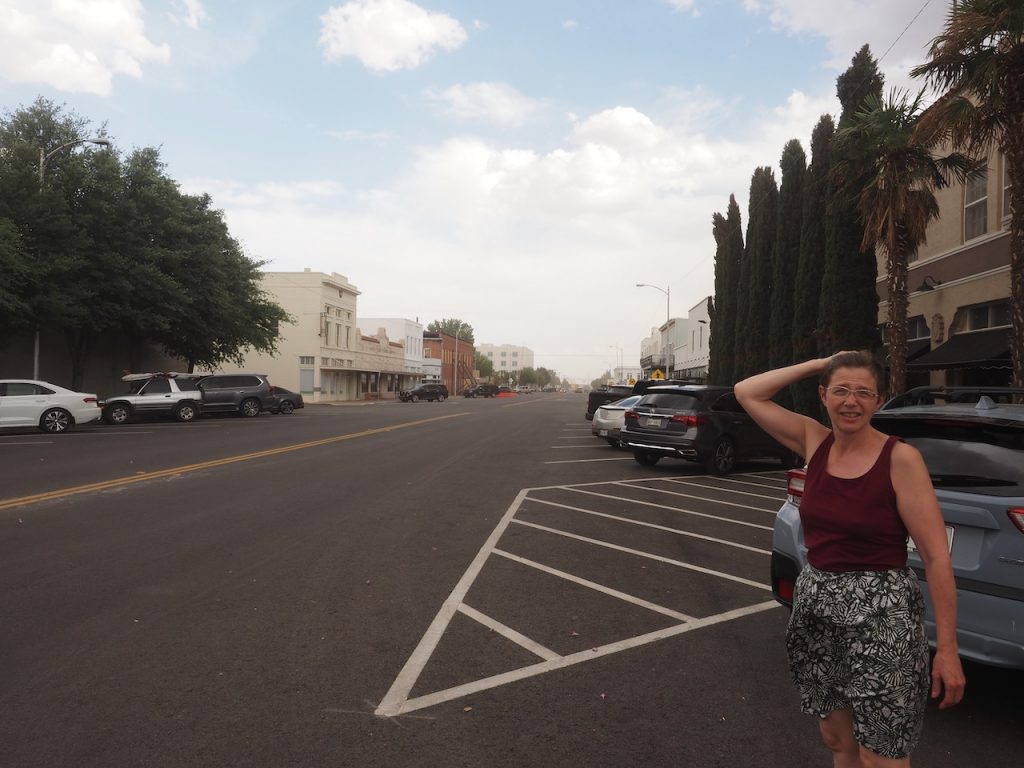
Before we went back to the hotel, we drove to the edge of town to take some more photos of the nearby mountains as clouds moved across-it’s a beautiful landscape, but with very few “things” that repeat over and over: the brush, the cacti, the bluffs and faraway mountains, the yellow grass–I can see why a minimalist like Judd would have been so attracted to it.
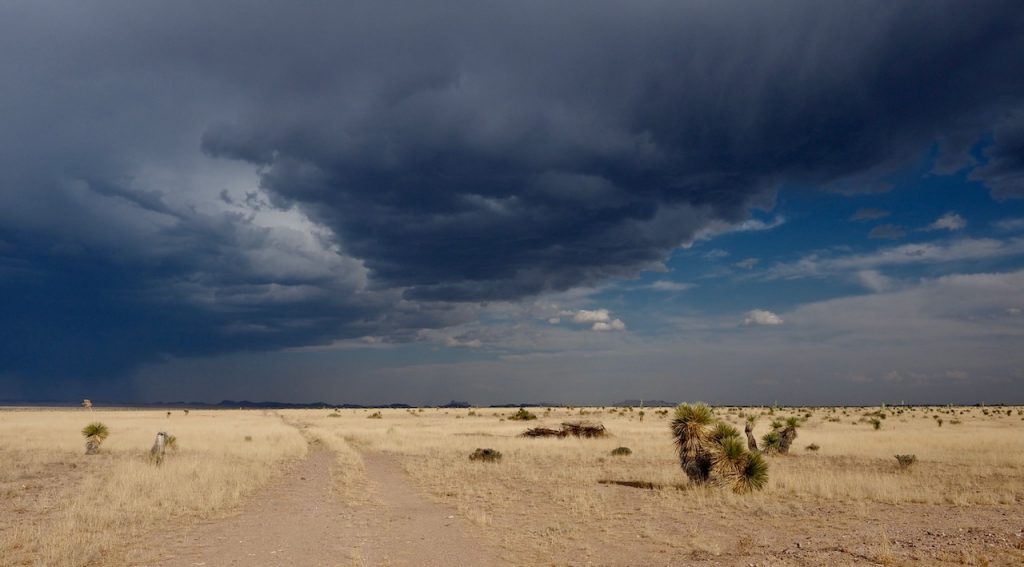
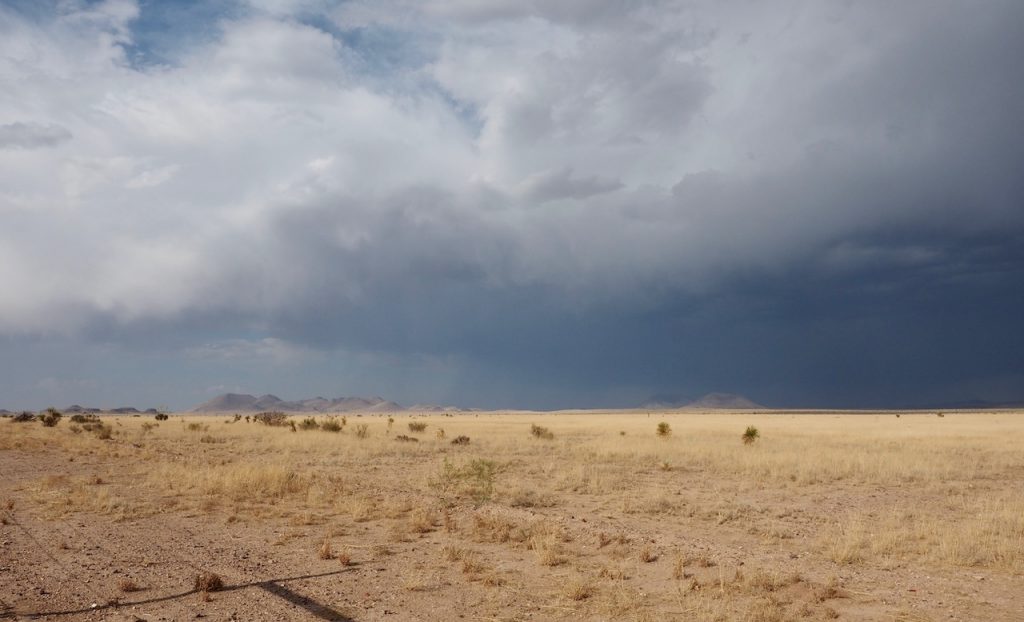
Postscript: New York Times article about the challenges of the Chinati Foundation in Marfa from August 2022.